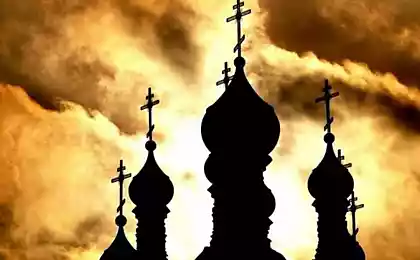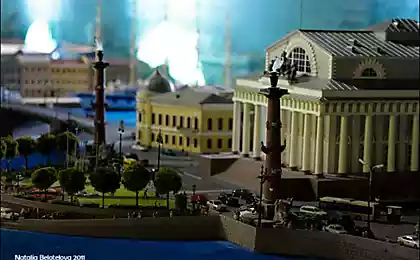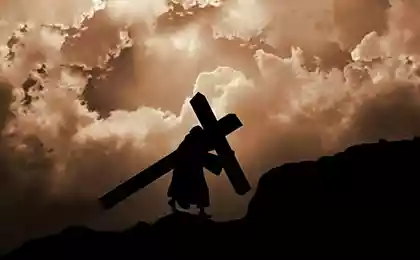1115
Good area of the 19th century
In the new building of the Museum of Moscow on Zubovsky Boulevard, 2 showed absolutely wonderful layout Holy Square and its surroundings, as they were in the late 19th century.
A central place on the layout takes the Holy Monastery, which gave the old name of the area: In 1937, it rolled up under the asphalt. Now in its place is a cinema "Pushkin", formerly known as "Russia" (built in 1961).

View of the monastery from the Boulevard:

In 1950, a monument to Pushkin moved to the other side of the street. Gorky (Tver), ie, to its present location. Temple Demetrios (right), demolished in 1934, and building on the left - in the 1970s.

View from the Passion Boulevard: Amazingly, the old manor buildings almost in the center of Moscow persisted in the late 19th century! Farther from the center building was almost entirely manor, because of this, Moscow and called "big village».

On the streets we see tram carriages, which appeared in Moscow in 1872. By 1900, a network of horse-drawn railways in Moscow was 90 km; on the lines of the car cruised 241. In 1894-96 transported per year to 25 million. Passengers.

Overall area Holy Square in the late 19th century, has changed beyond recognition. Few buildings can serve as benchmarks. For example, the beautiful Church of the Nativity in Putinki in Malaya Dmitrovka:


What a lovely and cozy Moscow was at that time!

In recent years, have been proposed restoration projects ensemble with a bell tower, but beyond that have not yet gone.
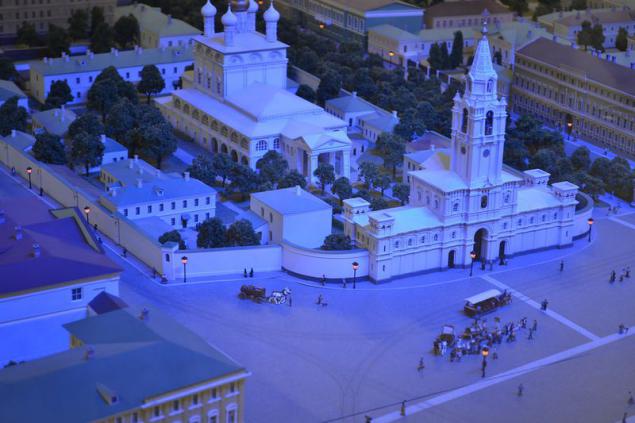
It would be good to clean everything here vehicular traffic in the tunnel and to restore a continuous line the boulevard:

View from the Tverskaya Street:


View of the ensemble from above:

Now in place of the old manor households with coach house building a ministry:

From these patios too little to left:
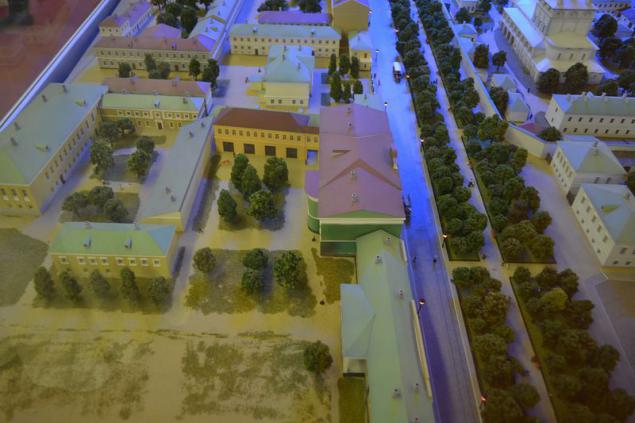
From this building preserved 19th-century building in the foreground:

View on Tverskaya Street from the north (from):
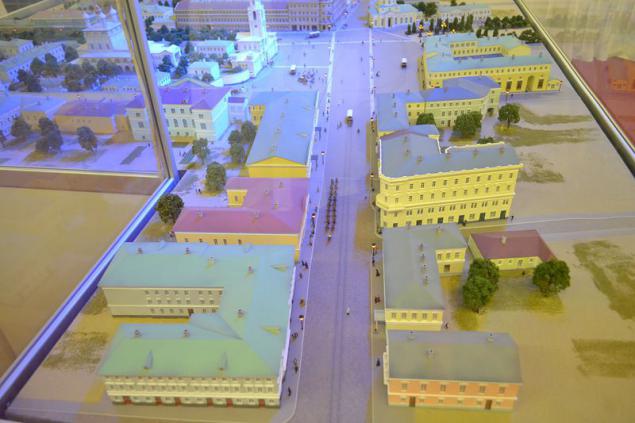
Of course, the better to see with my own eyes this layout. He is simply breathtaking!
--img18--
Source: moya-moskva.livejournal.com
A central place on the layout takes the Holy Monastery, which gave the old name of the area: In 1937, it rolled up under the asphalt. Now in its place is a cinema "Pushkin", formerly known as "Russia" (built in 1961).

View of the monastery from the Boulevard:

In 1950, a monument to Pushkin moved to the other side of the street. Gorky (Tver), ie, to its present location. Temple Demetrios (right), demolished in 1934, and building on the left - in the 1970s.

View from the Passion Boulevard: Amazingly, the old manor buildings almost in the center of Moscow persisted in the late 19th century! Farther from the center building was almost entirely manor, because of this, Moscow and called "big village».

On the streets we see tram carriages, which appeared in Moscow in 1872. By 1900, a network of horse-drawn railways in Moscow was 90 km; on the lines of the car cruised 241. In 1894-96 transported per year to 25 million. Passengers.

Overall area Holy Square in the late 19th century, has changed beyond recognition. Few buildings can serve as benchmarks. For example, the beautiful Church of the Nativity in Putinki in Malaya Dmitrovka:


What a lovely and cozy Moscow was at that time!

In recent years, have been proposed restoration projects ensemble with a bell tower, but beyond that have not yet gone.

It would be good to clean everything here vehicular traffic in the tunnel and to restore a continuous line the boulevard:

View from the Tverskaya Street:


View of the ensemble from above:

Now in place of the old manor households with coach house building a ministry:

From these patios too little to left:

From this building preserved 19th-century building in the foreground:

View on Tverskaya Street from the north (from):

Of course, the better to see with my own eyes this layout. He is simply breathtaking!
--img18--
Source: moya-moskva.livejournal.com





